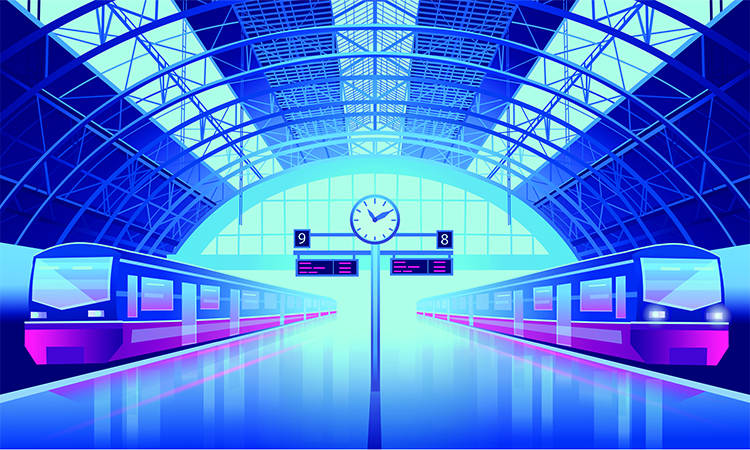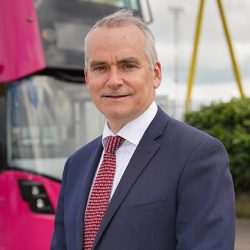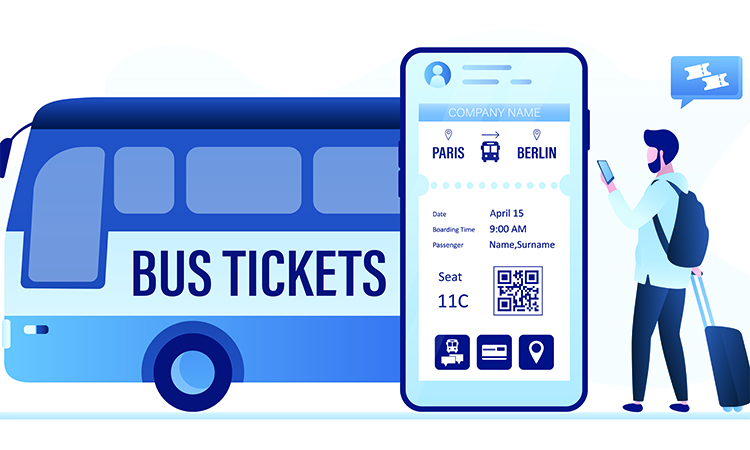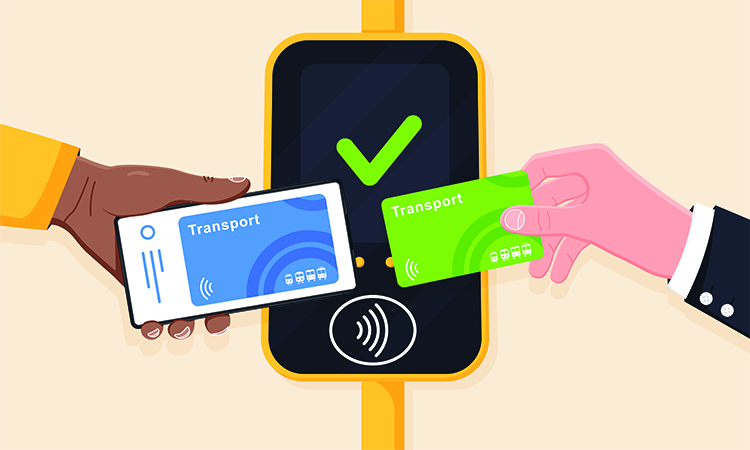Digitally enhancing operations to deliver a seamless passenger experience
- Like
- Digg
- Del
- Tumblr
- VKontakte
- Buffer
- Love This
- Odnoklassniki
- Meneame
- Blogger
- Amazon
- Yahoo Mail
- Gmail
- AOL
- Newsvine
- HackerNews
- Evernote
- MySpace
- Mail.ru
- Viadeo
- Line
- Comments
- Yummly
- SMS
- Viber
- Telegram
- Subscribe
- Skype
- Facebook Messenger
- Kakao
- LiveJournal
- Yammer
- Edgar
- Fintel
- Mix
- Instapaper
- Copy Link
Posted: 7 March 2023 | Intelligent Transport | No comments yet
If there is one thing that the public transport industry has learnt from the COVID-19 pandemic, it is that the passenger must always be the priority. Post-pandemic, operators and authorities are working to deliver transport services that offer an optimum experience to those that they serve in a variety of ways – whether that be by adapting service timetables; optimising operations to improve speed and reliability; taking a more innovative approach to vehicles; or digitalising both operations and services. But, no matter what innovations are being developed and implemented, everything ultimately works to deliver one key thing: an improved passenger experience.
This ‘roundtable’ brings together key industry personnel and those passionate about sharing their opinions on the passenger experience to discuss which different factors impact the passenger experience and how the public transport industry is working to address them, as well as what the future passenger experience may look like.


Participants
  |
  |
  |
| Chris Conway Chief Executive at Translink |
Rebecca O’Leary Head of Customer Experience at Eurostar |
Marc Schrader Head of R&D (Hildesheim) at Nomad Digital |
Currently, what are some of the key factors that are considered in relation to delivering a positive passenger experience?


Our goal is to deliver high levels of customer satisfaction and continually improve our Net Customer Sentiment Score.
Our Customer Experience Manager delivers a comprehensive programme that aligns our Continuous Improvement approach with the feedback that we gather on our CX. This involves analysing a number of sources to understand how we are performing from a customer point of view on all of the touchpoints of any journey.
Examples of CX review are:
- Complaints patterns
- Social media sentiment and trends
- NPS/eCommerce scoring
- Punctuality
- Reliability
- ‘Happy or Not’ scheme.
Passengers expect to receive a positive experience across all aspects of their journey:
- The bus stop or train halt/station overall
- Cleanliness on the inside of the bus/train
- Journey value for money
- Frequency of buses/trains on their route
- Punctuality/reliability of the bus/train
- Journey length of time
- The availability of seating/standing or wheelchair space
- Personal safety/security on board
- Provision of information during the journey
- Friendliness/helpfulness of driver/conductor/ staff
- Safety of driving/smoothness of the journey (bus)
- Usefulness of Translink’s website and app for journey planning
- Accessibility of the service (ease of getting on and off).
Translink operates a Customer Charter to ensure that our passengers receive a positive passenger experience. This includes keeping passengers safe and informed and making every journey as accessible and easy as possible. We also welcome feedback as part of our Customer Satisfaction Monitoring programme, which includes regular ‘passenger panels’ to ensure that we are meeting expectations and to identify any challenges.
To deliver the best possible customer experience, you have to put the customer at the very heart of your business”


We consider the end-to-end user journey, from the moment a passenger searches for and books a train with us to the moment that they leave the service at their destination station. We want every part of that experience to be as seamless as possible.
Customers need digital self-service options when it comes to managing their journey, and operators need to meet these expectations. At Eurostar, we have updated our ticket conditions to offer more flexibility, as well as the functionality of our app to offer easier access to customers that are changing their plans. In the station, it’s about an efficient, stress-free check in and ensuring that our teams are visible at every touchpoint to offer advice and a helping hand.
On-board, we offer regular and consistent training for teams with videos from our Business Premier Culinary Director, Raymond Blanc, offering expert advice on delivering a truly first-class service based on his many years’ experience in the hospitality industry.
Finally, it’s about empowering teams to resolve customer problems. In our customer contact centre and on-board, we have a framework that guides colleagues to make decisions without needing to revert to a manager. We have just introduced this to our London station and will do so in Paris in the near future.


- Have easy access to a traffic system with high availability
- Be informed of the latest travel information and feel safe whilst travelling
- Be perceived as a valued member of a modern society by choosing public transport to travel.
To be competitive with a car or other individual transport systems, such as travelling by plane, it is also important that passengers perceive their travel experience on the same level of comfort when it comes to:
- Accessing their personal belongings
- Having their own individual and comfortable environment
- Having access to services that are tailored to their personal requirements and preferences, so that they feel considered on an emotional level.
Despite securing the availability of highly frequent transport offerings and easy access to the traffic system itself, other services like real-time journey information, internet on‑board, infotainment and rail entertainment services become key to making a journey complete and creating a positive experience. This includes information such as where passengers can get a coffee or a meal – on‑board or at the station where are they changing – and, similarly, where to buy other items that are important for their journey, such as toiletries etc.
All of these factors in themselves have to be present in normal operation. However, the challenge in industry is to synchronise all of these services and let them form an integrated seamless passenger experience across all channels. This includes services available in the cloud, on the apps of passenger devices, as well as on-board portals and passenger information systems installed on trains.
At the same time, these services must be up-to-date and state of the art, which requires fast innovation cycles to invent, implement and roll-out new and tailored services across many fleets. Standardisation – including Internet of Things (IoT) technologies and Software-as‑a‑Service (SaaS) models – will allow a resolution to this in the future. This will be one focus for industry, as we are now at the edge of implementing such models.
How can accurate and up-to-date real-time information and journey planning contribute to a smoother and easier passenger experience?


When we add real-time and live updates to the mix, we are essentially providing reassurance and confidence for customers. It reduces perceived waiting times and removes uncertainty – ultimately, the customer feels in control and has a better experience as a result, even when things don’t go as planned.
Passenger information provision is an integral part of the public transport journey, as it empowers customers to make travel choices”
By improving the quality of customer information with more detailed, accurate and timely information, we enhance customer satisfaction and confidence, which can stimulate re-use and encourage new users (modal shift) to public transport.
Real-time information can support customers end-to-end with a range of solutions, including at-stop departure information, on-vehicle AV next stop data, real-time journey planning or even in-service update alerts improving access to public transport services.
From an operational perspective, real-time information provides a real-world view of delivery; we can benefit from business intelligence by using actual delivery data to refine our products and services and provide the most efficient solutions, allowing us to continually improve our public transport offering.


Accurate and up-to-date real-time information is a key part of improving the customer experience when things don’t go to plan.
We have live journey details available both online and on-board to ensure a regular flow of information to customers, in addition to live announcements, social media updates and direct customer communication.
If we know in advance that we have to make a change – during the recent UK rail strike period, for example – then we let customers know in good time and share in one message all of the information and links that they need to self-serve.
If customers are equipped with the right information as early as possible, it gives them the option to change their plans if needed and causes the least disruption possible.




What role do ticketing and payments systems play in a passenger’s journey experience, and are the systems that are currently in place being optimised with the passenger in mind?


Translink were early adopters of smart ticketing, implementing our first smartcard travel products in 2002 and, over the years, we have not only further developed our range of smartcard products, but have also included mobile ticketing and barcode ticketing options for all bus and rail customers. By early 2023, all of our bus, rail and Glider services across the province will be enabled for contactless payment acceptance, but we still offer cash/paper ticket options on our services to ensure social inclusivity for those customers who cannot, or do not want to, pay by card.
Our ultimate goal is the implementation of a Tap-On/Tap‑Off Account-Based Ticketing (ABT) system in 2024, with the focus on a significantly improved customer experience through reduced cash handling, faster boarding times and shorter journey times for all passengers.
Customers will be able to view their travel history and payment history online, and also see where the ABT system has provided the best value daily or weekly capped fare, based on their individual travel pattern. With our complex fare structure and wide range of ticket types, this removes the difficult choice for customers of pre-selecting their ticket as they simply turn up, tap and travel on our services, and their discounted fare is automatically calculated in the back office.
Public transport systems must be easily accessible at a transparent and predictable cost to encourage use”


In Germany, the recent introduction of a country-wide ticket that is valid across various traffic systems and all regions (buses, metros, trains) was a huge success. Despite the reasonable price, the fact that access to the various traffic systems was that easy and simple was the main driver for success.
It has shown an encouraging effect; many people were leaving their cars at home and used the public transport system extensively during the summer. This had a measurable result not only on the average utilisation of the public transport systems, but also decreased individual traffic significantly.
Industry must be creative to offer passengers simple and easy-to-use payment models with low infrastructure and overhead costs. Overly complex systems could have a negative effect on the passenger experience and also be a discouraging factor for choosing to travel by rail.


How is the continuous digitalisation of the public transport industry impacting the passenger, and how is it improving their travel experience?


Technology has changed how people travel and plan their journey. In partnership with leading transport technology providers, we have invested in a website with a comprehensive eCommerce capability and a journey planning app.
Translink also provides integrated real-time passenger information across the network, audio visual on-board and new digital timetables at key bus stops, providing our customers with estimated arrival times and messaging in real time.
By having access to the necessary infrastructure and information, passengers can have a seamless experience”
This ensures that our customers have accurate and accessible travel information, giving them a more pleasant customer experience.
These features are particularly beneficial for infrequent users, passengers with disabilities and tourists. Ensuring that services are accessible for all is a key part of Translink’s strategy on Customer Focus.
As part of Translink’s continuous improvement strategy, we want to continue to monitor and improve the punctuality of our services for our customers. Real-time journey information also provides accurate performance data to support improvements in the customer experience.
Social inclusion requires ensuring that the whole journey is made possible and practical. By having access to the necessary infrastructure and information, passengers can have a seamless experience. In addition, this helps to relieve the anxiety and challenges of travelling in unfamiliar or difficult circumstances, or where disruption occurs, improving the customer experience for everyone.


Critically, it also improves the speed of response, which can really make a difference to overall customer experience. With a chatbot functionality, for example, which we are bringing to our customer contact centre shortly, there is instant interaction. We are also introducing artificial intelligence (AI) to our digital tools to help us to efficiently answer customer queries.
From a business perspective, digitalising straightforward transactions allows our teams to focus on complex queries where customers need the most help and where our expert teams can add the most value for the benefit of the customer.
Digitalisation is the key to make public transport more attractive and competitive”


Open Application Programming Interfaces (APIs) and interfaces based on common standards allow the interconnection of systems from multiple vendors, while modern SaaS models allow fast innovation cycles and the automated roll-out of new applications and services.
How important do you think mobility/transport hubs will be in the future, and will they dramatically improve the passenger experience?


Multimodal hubs bring together a range of transport modes – such as car, bus, rail and walking and cycling – with the aim of making it as easy as possible to change from one to the other and to do so in a safe and attractive environment.
Translink’s first transport hub, the North-West multi-modal transport hub (North-West Hub), officially opened in 2020 in Northern Ireland’s second largest city, Derry/Londonderry.
The North-West transport hub promotes active travel and delivers enhanced passenger facilities and staff accommodation; increased bus services, including cross-border services; and cycling facilities; as well as a connection to a new greenway.
Construction work is also well underway on Belfast Grand Central Station – a new flagship integrated transport hub for Northern Ireland – with a phased opening planned in 2024.
This station will be the main transport gateway to Belfast, comprising eight rail platforms, 26 bus stands and 300 cycle parking spaces. It will create a sense of arrival in a modern, progressive city, with rail, bus and active travel connections to all parts of Northern Ireland and beyond.
This facility will also be a catalyst for the regeneration of the area as part of the wider Weavers Cross development, and will ensure that we have the right infrastructure in place to encourage modal shift to attract more people to choose public transport.


Other traffic modes – such as shared bike, shared taxis and smart electric car rental services – must be included within all aspects of the supporting digital services, such as passenger information systems and ticketing, to ensure a seamless passenger experience.
In your opinion, what do you think will be the main focus for operators and authorities moving forward in order to create an easy, smooth and enjoyable experience for future passengers?


We need to stay ahead of trends and introduce the right technology at the right time to improve the passenger experience”
We need to stay ahead of trends and introduce the right technology at the right time to improve the passenger experience. Customer expectations in terms of technology are high; as a sector, we need meet these.
As passenger numbers grow, it’s also important to look at the way that we use space to accommodate customers in stations and on-board, meeting commercial needs without compromising on quality.


Beside more trains, a greater volume of change over points and mobility hubs can take time and investment to achieve progress, whereas other services for a comparably small investment can also make the existing offering more attractive for passengers through enhancing their experience. Especially services that are designed to inform passengers quickly, consistently and intuitively; these can have a significant impact on the experience and overall acceptance of public transport systems. These include entertainment services, media offerings and access to other digital services, such as food ordering, reservation of group taxis or other smart services that may be required during the journey.
Related topics
Journey Planning, Passenger Experience, Public Transport, Ticketing & Payments, Travel & Passenger Information
Issue
Issue 4 2022
Related modes
Rail
Related organisations
Eurostar, Nomad Digital, Translink
Related people
Chris Conway, Marc Schrader, Rebecca O’Leary








